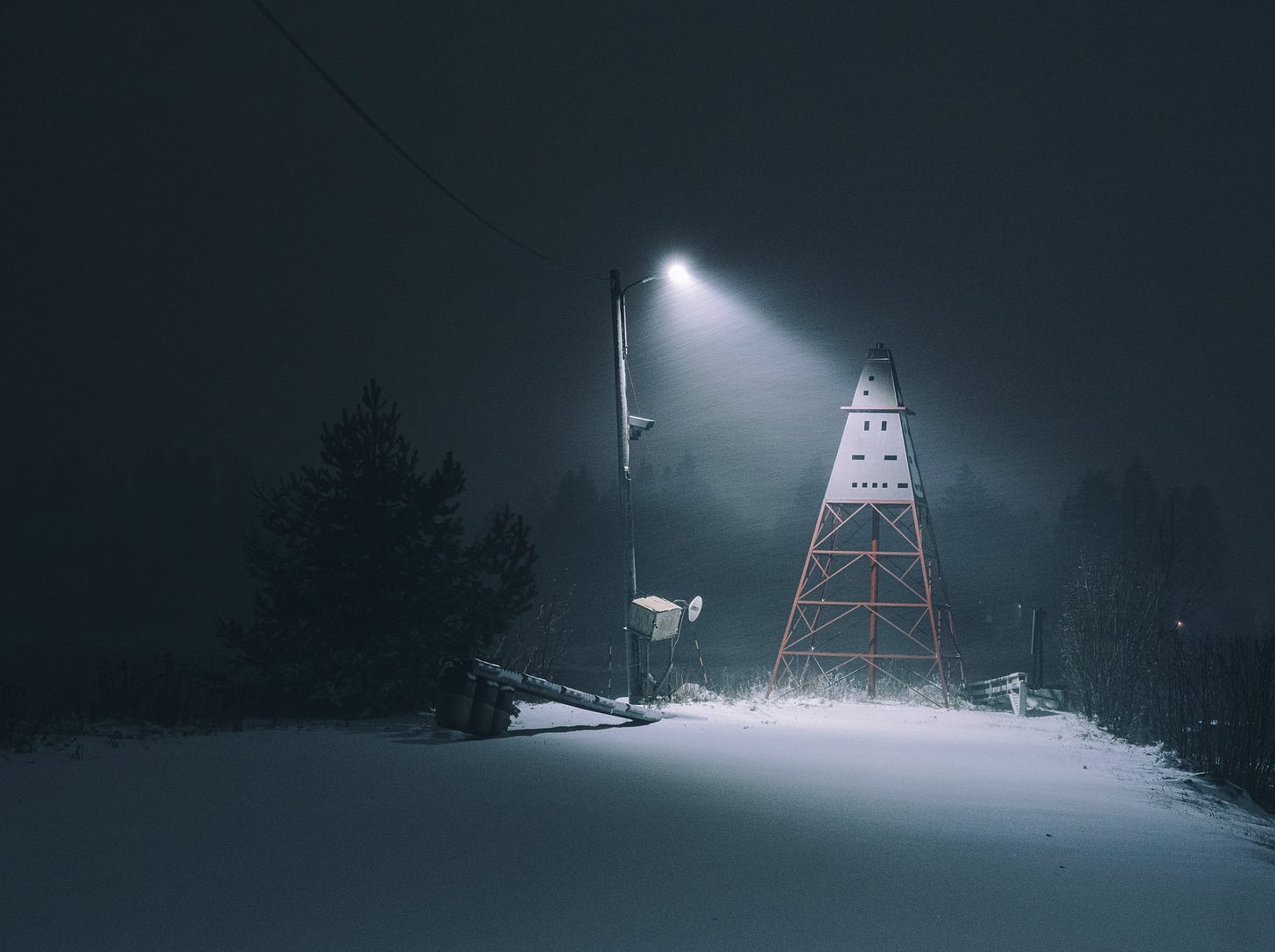Finding the extraordinary in the ordinary
Finding stories is a continual quest for student filmmakers—discovering them, constructing them, and making them matter is at the heart of finding their voice as storytellers. Photographs have always compelled me; they’re windows into moments that beg for expansion. I find myself imagining what lies beyond the frame, asking questions, and weaving possible narratives - some rooted in reality, others entirely my own.
When I encountered this image by Markus Naarttijärvi, I was transported. It evoked mystery and memory, a place both of this time and beyond it. I know this place, meaning, I recognize this kind of landscape. The cold is palpable, the muted quiet of snowfall almost audible, and the dark feels like it’s not quite evening, just an early winter afternoon in the north. I imagine someone heading toward this structure with purpose and needing to bypass it to reach beyond—to a place with answers, as this one holds only questions.
This is the power of photographs: they invite us to imagine and to create. And so, for this post, I wanted to share an approach to harnessing that power in the classroom—or for yourself.
Start with the Basics: Who, What, When, Where, Why
Spend a few quiet moments with the photo.
Who: Who is in the image, or implied to be there?
What: What is happening? What objects or details stand out?
When: What time of day, season, or year is this?
Where: Where does this take place? Indoors, outdoors, somewhere real or imagined?
Why: Why is this moment significant enough to capture?
Let your eyes linger. What detail draws you in? Write it down. Describe it. And if your thoughts drift to something outside the frame, let them. That is where stories begin.
Facts and Fictions
What do you see? List the observable facts in the photo.
What do you think you see? Write down assumptions, interpretations or feelings. These “fictions” can open doors to unexpected narratives.
This distinction between fact and fiction sharpens analytical skills while encouraging imaginative leaps.
Build the Story
Once you have explored the image, use these prompts to develop a narrative:
Time before: What happened right before this photo was taken?
Point of view: Whose perspective does this photo represent? What might they see or feel or hope for?
Time after: What happens next? Is this a turning point, or does the story take an unexpected direction?
Bringing this into the classroom:
This exercise is simple to adapt and sparks creative engagement. Here’s how to get started:
Share an image of your choosing or invite students to bring their own.
Use the "Who, What, When, Where, Why" framework to explore the photo.
Expand into “Facts and Fictions” to prompt deeper thinking.
Challenge students to develop narratives using one of these approaches:
Write a 6-word story inspired by the image.
Pitch a film concept based on the scene.
Storyboard the “before” or “after” using six frames, placing the photo as one of the key frames and sketching out the other five.
Add a simple soundscape to the image.
Tip - If students feel stuck, have them focus on a single detail - an object, a shadow, a texture, or something barely visible. Often, that’s where the best ideas begin.
The Photographer
Markus Naarttijärvi is a photographer and a Professor of Law at Umeå University, Sweden. Raised in Kiruna, in Sweden's far north, Markus began his career as a photojournalist before transitioning to academia, where he now specializes in constitutional rights and the intersection of technology, security, and human rights.
Thank you to Markus for graciously granting permission to feature his image in this post.
You can explore his work here:
Takeaway
Every photograph holds a story—some buried deep, others waiting just below the surface. Whether you are a teacher guiding students or a storyteller exploring your own creativity, this exercise offers a way to unlock those narratives. What stories will you discover? I’d love to hear about them—or see where they take you.






